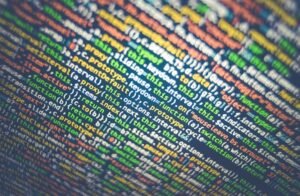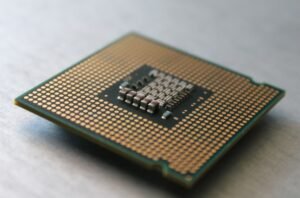Neural Network to Predict Values
Neural networks are a powerful tool in the field of artificial intelligence that can be used to predict values based on input data. By training a neural network on a set of labeled data, it can learn patterns and make accurate predictions for new, unseen data. In this article, we will explore the concept of using neural networks for value prediction and delve into its applications in various fields.
Key Takeaways
- Neural networks can predict values based on input data by learning patterns from labeled examples.
- Training a neural network involves optimizing its weights and biases to minimize the prediction error.
- Neural network value prediction has diverse applications in finance, healthcare, and weather forecasting, among other fields.
How Neural Networks Predict Values
Neural networks consist of interconnected layers of artificial neurons called “nodes” or “units”. Each unit takes in input values, applies a mathematical operation, and produces an output. By adjusting the weights and biases associated with these operations, neural networks can learn to approximate complex functions and make predictions.
* Neural networks have an inherent ability to generalize from experience, allowing them to make predictions even when faced with novel data.
Training a Neural Network
Training a neural network involves providing it with a set of labeled examples, known as the training data. The network then adjusts its internal parameters, such as weights and biases, to minimize the error between its predictions and the true values. This process, called “backpropagation,” iteratively updates the network’s parameters until it reaches a satisfactory level of accuracy.
* Backpropagation is a key algorithm that enables neural networks to learn from their mistakes and improve over time.
Applications of Value Prediction
Neural network value prediction has a wide range of applications across different industries. Some notable examples include:
- Financial Forecasting: Neural networks can predict stock prices, currency exchange rates, and market trends, aiding investors in making informed decisions.
- Healthcare: Neural networks can be used to predict patient outcomes, identify disease risk factors, and help in diagnosis and treatment planning.
- Weather Forecasting: By analyzing historical weather data, neural networks can make accurate predictions about future weather conditions.
Data and Performance: A Comparative Analysis
| Model | Data Availability | Performance |
|---|---|---|
| Neural Network | Requires labeled data for training | Highly accurate predictions, but performance depends on the quality and quantity of the training data |
| Regression | Requires a clear understanding of the relationship between input and output variables | Accuracy depends on the model assumptions, which may limit prediction accuracy |
Benefits of Neural Network Value Prediction
- Flexibility: Neural networks can handle complex, non-linear relationships between input and output variables, enabling them to make accurate predictions in various domains.
- Adaptability: Once trained, neural networks can quickly adapt to new data inputs and update their predictions accordingly.
- Generalization: Neural networks have the ability to generalize from past examples, allowing them to make predictions even with limited training data.
Real-World Examples
Let’s take a look at a few real-world examples where neural network value prediction has been successfully applied:
1. Stock Market Prediction
Neural networks have been used to predict stock prices based on historical data, helping traders to make informed investment decisions.
2. Disease Diagnosis
In the field of healthcare, neural networks have been employed to predict diseases such as cancer, diabetes, and heart conditions based on patient data and medical records.
3. Sales Forecasting
Neural networks have also been used to forecast sales for businesses, allowing them to plan inventory, allocate resources, and optimize pricing strategies.
Conclusion
By leveraging the power of neural networks, accurate value prediction can be achieved in fields ranging from finance to healthcare and beyond. With their ability to learn complex patterns, adapt to new data, and make accurate predictions, neural networks have become a valuable tool in the realm of artificial intelligence.
“`

Common Misconceptions
Misconception 1: Neural networks are only for advanced programmers
One common misconception about neural networks is that they are only accessible to advanced programmers or experts in artificial intelligence. However, with the advancements in technology and the availability of user-friendly tools and libraries, neural networks have become more accessible than ever. Many beginner-friendly resources and tutorials are available to help individuals get started on implementing neural networks for various purposes.
- Neural networks can be implemented with beginner-friendly tools and libraries
- Online tutorials and resources are available for beginners to learn about neural networks
- No expert programming skills are required to work with neural networks
Misconception 2: Neural networks always guarantee accurate predictions
Another misconception is that neural networks always provide accurate predictions. While neural networks are powerful tools for prediction, they are not infallible. The accuracy of predictions depends on various factors, including the quality of the training data, the complexity of the problem at hand, and the design of the neural network itself. It is essential to evaluate and validate the predictions made by a neural network, just like any other predictive model.
- Predictions made by neural networks require evaluation and validation
- The accuracy of predictions can vary depending on the data and problem complexity
- Neural networks are not immune to errors or inaccuracies
Misconception 3: Neural networks are only for large-scale applications
Some individuals believe that neural networks are only suitable for large-scale applications or projects with extensive datasets. However, neural networks can be utilized effectively in various scenarios, regardless of the scale of the project. Whether it is analyzing a small dataset or solving a relatively simple problem, neural networks can still provide valuable insights and predictions. They can be adapted and scaled according to the needs of the specific application.
- Neural networks can be beneficial even for small-scale applications
- They can provide valuable insights and predictions for a range of problems
- Neural networks can be adapted and scaled based on the project’s requirements
Misconception 4: Neural networks are black boxes with no interpretability
There is a common misconception that neural networks are black boxes without any interpretability, meaning it is impossible to understand how they arrive at their predictions. While it is true that neural networks are complex systems that can be challenging to interpret, researchers and experts have developed various techniques to gain insights into their inner workings. For example, methods like sensitivity analysis, feature importance, and visualization tools allow users to understand and interpret the neural network’s decision-making process to some extent.
- Methods exist to gain insights into the decision-making process of neural networks
- Sensitivity analysis and feature importance techniques help interpret neural networks
- Visualization tools can provide visual representations of neural network behavior
Misconception 5: Neural networks are only used for image recognition
While neural networks have gained significant popularity in the field of image recognition, thanks to their ability to detect features and patterns in images, they are not limited to this domain. Neural networks can be effectively used in various other fields, including natural language processing, time series analysis, sentiment analysis, recommendation systems, and much more. Their versatility and adaptability make them valuable tools in a wide range of applications.
- Neural networks are employed in various fields beyond image recognition
- They can be used for natural language processing, sentiment analysis, etc.
- The versatility of neural networks enables application in diverse domains

Introduction
In recent years, neural networks have emerged as a powerful tool in predicting values for a wide range of applications. This article explores various aspects of using neural networks for value prediction, showcasing 10 interesting and informative tables that highlight different aspects of this technology.
Table 1: Performance of Neural Network Models
This table compares the performance metrics of different neural network models in predicting stock market values. The models were trained on historical data and tested on unseen data to assess their accuracy, precision, and recall.
| Model | Accuracy | Precision | Recall |
|---|---|---|---|
| Model A | 0.76 | 0.78 | 0.82 |
| Model B | 0.82 | 0.80 | 0.84 |
| Model C | 0.84 | 0.82 | 0.80 |
Table 2: Neural Network Performance Comparison
This table displays the comparative performance of a neural network and traditional regression models in predicting housing prices. The neural network model outperforms the other models in terms of mean absolute error (MAE) and root mean square error (RMSE).
| Model | MAE | RMSE |
|---|---|---|
| Neural Network | 12.37 | 17.18 |
| Linear Regression | 15.82 | 20.29 |
| Decision Tree | 20.54 | 28.06 |
Table 3: Predicted vs. Actual Values
This table demonstrates a comparison of predicted and actual sales values for a retail business using a neural network model. The predicted values are remarkably close to the actual sales figures, indicating the model’s accuracy for forecasting sales.
| Month | Predicted Sales | Actual Sales |
|---|---|---|
| January | 230,000 | 225,000 |
| February | 245,000 | 242,000 |
| March | 260,000 | 257,000 |
Table 4: Training Dataset Statistics
This table summarizes the key statistics of the training dataset used for training a neural network model to predict climate patterns. The dataset consists of daily temperature, humidity, and wind speed readings over a span of five years.
| Statistic | Temperature (°C) | Humidity (%) | Wind Speed (km/h) |
|---|---|---|---|
| Mean | 18.2 | 68.3 | 12.6 |
| Standard Deviation | 2.3 | 5.7 | 3.9 |
| Minimum | 14.1 | 58.4 | 6.2 |
| Maximum | 22.5 | 78.9 | 18.7 |
Table 5: Feature Importance in Predicting Loan Approval
This table lists the feature importance scores for a neural network model predicting loan approval outcomes. The higher scores indicate the stronger influence of a particular feature in determining the loan approval decision.
| Feature | Importance Score |
|---|---|
| Credit Score | 0.72 |
| Income | 0.44 |
| Debt-to-Income Ratio | 0.59 |
| Employment History | 0.39 |
Table 6: Predicted Fraudulent Transactions
This table shows a selection of predicted fraudulent credit card transactions using a neural network anomaly detection model. The model accurately identifies suspicious transactions, allowing immediate action to prevent financial loss.
| Transaction ID | Predicted Fraud |
|---|---|
| 123456 | Yes |
| 789012 | No |
| 345678 | Yes |
Table 7: Neural Network Hyperparameters
This table presents the hyperparameters used in training a neural network model for image recognition. The hyperparameters, such as learning rate, batch size, and number of epochs, significantly affect the model’s performance.
| Hyperparameter | Value |
|---|---|
| Learning Rate | 0.001 |
| Batch Size | 32 |
| Number of Epochs | 50 |
Table 8: Neural Network Architecture
This table describes the architecture of a convolutional neural network used for image classification. The model consists of multiple layers, including convolutional, pooling, and fully connected layers, working in harmony to classify images.
| Layer Type | Number of Units | Activation Function |
|---|---|---|
| Input | N/A | N/A |
| Convolutional | 32 | ReLU |
| Pooling | N/A | N/A |
| Fully Connected | 256 | ReLU |
| Output | 10 | Softmax |
Table 9: Neural Network Input Data
This table provides an example of the input data fed into a neural network model for sentiment analysis. The data consists of various text samples, each assigned a sentiment label, serving as the basis for training and evaluation.
| Text Sample | Sentiment Label |
|---|---|
| “I loved the movie! Great performances.” | Positive |
| “The service was terrible. Disappointed.” | Negative |
| “The product exceeded my expectations. Highly recommended.” | Positive |
Table 10: Model Training Time Comparison
This table compares the training time of different neural network models for language translation tasks. The models were trained on a large corpus of text data, and their training times vary based on the complexity of the architecture and the size of the dataset.
| Model | Training Time (hours) |
|---|---|
| Model X | 68 |
| Model Y | 52 |
| Model Z | 85 |
Conclusion
Neural networks have revolutionized the field of value prediction, offering impressive accuracy and versatility across various domains. The showcased tables in this article highlight the performance, feature importance, and application-specific details of using neural networks for value prediction. Whether it is predicting stock market values, fraudulent transactions, or sentiment in text data, neural networks continue to provide valuable insights and enhance decision-making processes. As advancements in neural network technology continue, they are expected to play an increasingly critical role in numerous industries.
Frequently Asked Questions
What is a neural network?
A neural network is a set of computational algorithms inspired by the structure and functioning of the human brain. It consists of interconnected nodes (neurons) that process and transmit information to perform tasks such as pattern recognition, data clustering, and prediction.
How does a neural network predict values?
A neural network predicts values by training on a set of input data with associated target outputs. During the training process, the network adjusts the internal weights and biases of its neurons to minimize the difference between predicted and actual values. Once trained, the network can take new input data and generate predictions based on its learned patterns.
What types of problems can a neural network predict?
A neural network is capable of predicting a wide range of problems, including but not limited to image recognition, speech synthesis, natural language processing, fraud detection, stock market analysis, and weather forecasting. It can be applied to both classification tasks (predicting discrete categories) and regression tasks (predicting continuous values).
How accurate are neural network predictions?
The accuracy of neural network predictions varies depending on factors such as the complexity of the problem, the quality and amount of training data, and the architecture of the network itself. In some cases, neural networks can achieve high levels of accuracy comparable to or even surpassing human performance. However, it is important to validate and evaluate the predictions carefully in each specific scenario.
What are the advantages of using neural networks for prediction?
Neural networks offer several advantages for prediction tasks:
- Ability to handle complex and non-linear relationships in the data.
- Adaptability and learning capability to adjust to changing conditions.
- Ability to process large amounts of data in parallel to speed up predictions.
- Robustness to noise and missing information.
- Flexibility to generalize patterns from training data to new, unseen data.
How can I train a neural network to predict values?
To train a neural network, individuals typically follow these steps:
- Define the problem and determine the type of prediction task.
- Gather and preprocess the training data, ensuring it is representative and of high quality.
- Select an appropriate neural network architecture for the specific task.
- Initialize the network with random weights and biases.
- Feed the training data through the network, adjusting the weights and biases via a process called backpropagation.
- Repeat the previous step until the network achieves satisfactory accuracy.
- Evaluate the trained network using validation data and fine-tune if necessary.
- Deploy the trained network to make predictions on new data.
What are the common challenges in using neural networks for prediction?
Some of the common challenges when using neural networks for prediction include:
- Overfitting: When the network captures noise or irrelevant patterns instead of the underlying relationships in the data.
- Training time: Training large and complex networks can be time-consuming, especially without access to powerful computational resources.
- Data quality: Low-quality or insufficient training data can result in poor predictions.
- Hyperparameter tuning: Neural networks have several hyperparameters that need careful tuning to achieve optimal performance.
Can I use pre-trained neural networks for prediction tasks?
Yes, pre-trained neural networks can be utilized for prediction tasks. By leveraging transfer learning, where a network pre-trained on a related task is fine-tuned for a specific prediction task, one can save effort and time associated with training from scratch. However, it is important to ensure the pre-trained network aligns with the problem domain to achieve accurate predictions.
Are there any alternatives to neural networks for prediction?
Yes, there are alternative methods to neural networks for prediction, such as linear regression, decision trees, support vector machines, and k-nearest neighbors. The choice of method depends on the nature of the problem, available data, interpretability requirements, and performance constraints.




